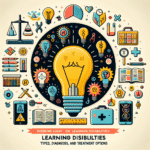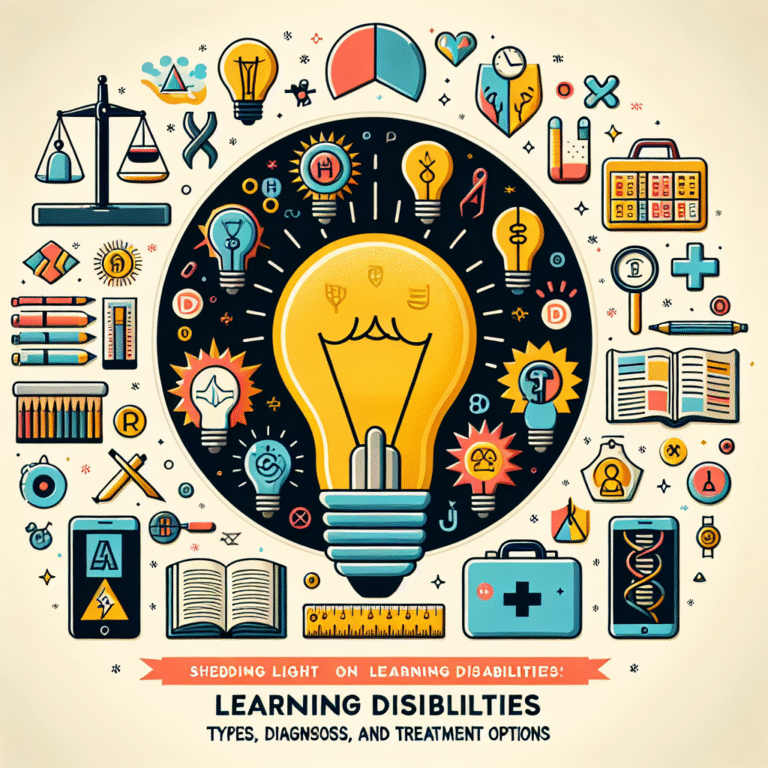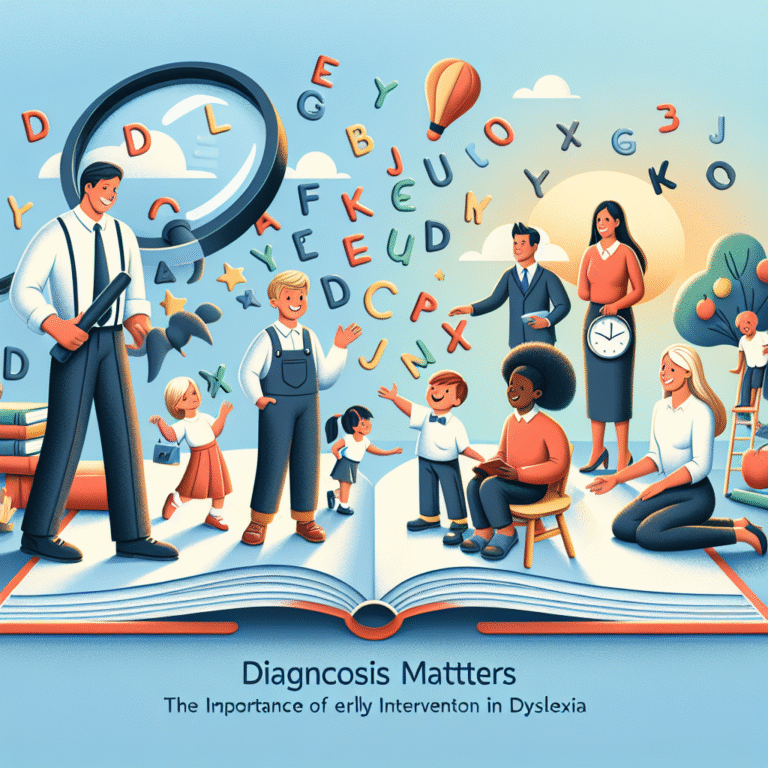
Finding Your Path: An Essential Parent’s Resource Guide for Understanding Learning Disabilities
Introduction
Every child deserves to thrive, but for many, conventional learning pathways can feel like navigating a labyrinth filled with obstacles. The journey is particularly challenging for those facing learning disabilities. “Finding Your Path: A Parent’s Resource Guide for Understanding Learning Disabilities” is not just a title; it’s a lifeline for parents striving to comprehend and support their children effectively. Understanding learning disabilities offers a significant advantage, not only helping parents to advocate for their kids but also fostering an environment where children can flourish academically and socially.
In a world where one in five children may face some form of learning difficulty, equipping yourself with knowledge is essential. This guide will delve into various types of learning disabilities, provide insights into interventions and support strategies, and share inspiring case studies that highlight real-world applications. By the end of this resource, you’ll have a clearer understanding of how to champion your child’s rights and potential.
Understanding Learning Disabilities
What are Learning Disabilities?
Learning disabilities are neurological disorders that affect how a person processes, understands, and retains information. They can manifest in various ways, impacting a child’s reading, writing, reasoning, or math skills. It’s crucial for parents to recognize that these are not indicative of a child’s intelligence; rather, they reflect differences in how an individual learns.
Types of Learning Disabilities
- Dyslexia: This reading disability affects fluency and comprehension, making it tough for children to decode words and understand text.
- Dyscalculia: This affects mathematical skills and number sense, often leading to difficulty in understanding and working with numbers.
- Dysgraphia: This writing disability can make it challenging for children to organize their thoughts on paper, affecting writing speed and clarity.
- Nonverbal Learning Disabilities: These affect social skills, organization, and spatial awareness, often making social interactions challenging.
The Importance of Early Identification
Recognizing signs early can make a significant impact. Just as a compass helps with navigation, identifying learning disabilities early on helps set a productive course for interventions and support.
Case Study: Tim’s Journey with Dyslexia
Tim, a bright 10-year-old, struggled silently in second grade. His love for storytelling clashed with his difficulties in reading. After an initial evaluation, Tim was diagnosed with dyslexia. With targeted interventions—including special reading programs and one-on-one tutoring—Tim’s parents partnered with educators to enhance his reading skills. Today, Tim excels and has developed a passion for literature. His story emphasizes the importance of timely identification and intervention.
Effective Strategies for Support
Building a Support Network
Creating a supportive environment is essential for children with learning disabilities. This network should include parents, teachers, specialists, and even peers. Collaboration enhances understanding and ensures consistent support across all areas of your child’s life.
Communication is Key
Open communication with educators about your child’s needs can foster a collaborative approach. Regular meetings—whether formal IEP (Individualized Education Plan) discussions or informal check-ins—will ensure that everyone is aligned in their goals for the child.
Table: Components of Effective Communication
| Component | Description |
|---|---|
| Clarity | Be direct and specific about your child’s needs. |
| Persistence | Follow up regularly to ensure ongoing support. |
| Positivity | Always highlight your child’s strengths and achievements. |
| Collaboration | Engage educators and specialists in joint strategy creation. |
Tailored Learning Approaches
Adopting personalized learning strategies is crucial for children with learning disabilities. Here are some examples:
- Multi-Sensory Learning: Incorporating visual, auditory, and kinesthetic channels can enhance understanding and retention.
- Assistive Technology: Tools like text-to-speech software can assist children in overcoming reading challenges.
- Structured Environments: Clear routines and organization can help minimize distractions and foster focus.
Case Studies that Make a Difference
Case Study 1: Lily’s Transformation with Dysgraphia
Lily, aged 9, faced severe challenges with handwriting due to dysgraphia. Her parents sought help from occupational therapists, who introduced her to alternative writing tools and exercises to enhance fine motor skills. By using a tablet for written assignments, Lily regained confidence and excelled in her work. This transformation illustrates how tailored interventions can lead to empowerment.
Case Study 2: Jake and His Nonverbal Learning Disability
Jake found it difficult to navigate social situations due to his nonverbal learning disability. His parents organized social skills training sessions, where he practiced conversational skills in structured environments. With time and support, Jake learned to interpret social cues better, which significantly improved his interactions with peers. His journey showcases the importance of social-emotional learning alongside academic support.
Resources for Parents
Books and Literature
- “Overcoming Dyslexia” by Sally Shaywitz: A comprehensive guide that offers insights into dyslexia and its treatments.
- “The Everything Parent’s Guide to Children with Dyscalculia” by Barbara A. Smith: An accessible resource for understanding and helping children with math difficulties.
Online Platforms
- Learning Disabilities Association of America (LDA): A treasure trove of research, resources, and a community for parents.
- Understood.org: This site offers personalized resources and expert advice tailored to specific learning disabilities.
Workshops and Webinars
Many local organizations and schools offer workshops for parents to learn about learning disabilities and strategies for support. Engaging in these educational opportunities can establish a strong knowledge base and create networking opportunities with other families facing similar challenges.
Frequently Asked Questions
1. What should I do if I suspect my child has a learning disability?
Start by documenting specific challenges your child faces. Communicate your observations to their teacher and request an evaluation from a qualified professional, such as a psychologist or special education teacher.
2. How can I advocate for my child’s needs in school?
Become familiar with your child’s rights under laws like the Individuals with Disabilities Education Act (IDEA). Attend meetings, collaborate with educators, and ensure your child receives the necessary accommodations and services.
3. Are learning disabilities hereditary?
Yes, research indicates that learning disabilities can run in families. A genetic component may influence a child’s likelihood of experiencing similar challenges.
4. What role does emotional support play in a child’s success?
Emotional support is crucial. Children with learning disabilities often face frustration and low self-esteem. Encouragement, validation, and a nurturing environment can significantly impact their resilience and outlook.
5. How do learning disabilities affect social skills?
Learning disabilities can hinder the ability to read social cues and communicate effectively, leading to difficulties in forming friendships. Social skills training and practice can help mitigate these challenges.
6. What resources are available if I’m feeling overwhelmed as a parent?
Support groups for parents of children with learning disabilities can provide emotional support, practical advice, and respite. Websites like LDA and Understood.org also offer valuable resources and community connections.
Conclusion
Navigating the world of learning disabilities is complex and often daunting, but “Finding Your Path: A Parent’s Resource Guide for Understanding Learning Disabilities” equips you with the knowledge and tools needed to empower your child. By embracing early identification, fostering a supportive environment, and actively collaborating with educators, you can significantly enhance your child’s learning experience.
As you embark on this journey, remember that every step taken is a step toward greater understanding and connection. Just like the compass points towards true north, finding your path will lead to a destination rich with opportunities for growth, confidence, and success. In the words of Helen Keller, "Alone we can do so little; together we can do so much." Stand by your child, and together, you will navigate the challenges and triumphs of their learning journey.
This guide is designed not just to inform, but to inspire action. Share it widely, engage with your community, and always seek support. There is light at the end of the tunnel—and together, we can find the best path forward.









